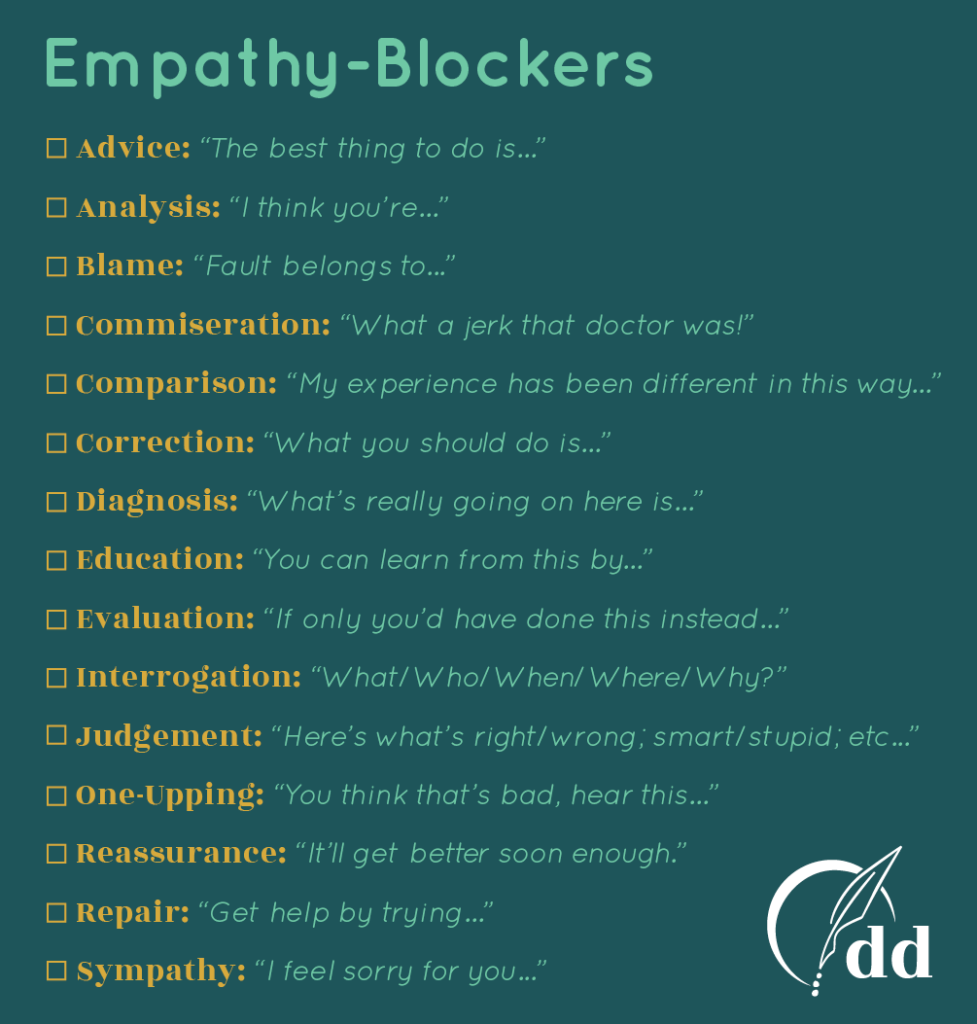Compassionate Comments
Tips and tools to help you in supporting our courageous contributors through online commentary
What we say to ourselves and in communication with others matters. In an effort to ensure that we are doing all that we can do to meet the needs of our courageous contributors, this section speaks to empathy and the use of compassionate communication when responding in text to what others elect to share with our project audience.
Consider the strength and courage that it takes for people to genuinely show up and be seen – even when choosing to share anonymously. When we can’t control the outcome in response to raw disclosure, we exercise vulnerability by definition; which inherently involves uncertainty, risk and emotional exposure. Given the empirically supported necessity of feedback in response to vulnerable action and for the purposes of growth; disclosure stands to stimulate our greatest fears and insecurities. In other words, what we say in response to vulnerability has tremendous power – both to heal and to harm.
Before providing you with tips for supportive commentary, consider these common barriers to empathic response identified by Dr. Marshall Rosenberg; whose work evolved into what is known today as ‘Nonviolent Communication‘ or ‘NVC’.

If we think of empathy as a respectful or compassionate understanding – a way of being with another, instead of doing or saying the ‘right’ thing; the heartfelt intention to connect and to communicate support is likely to surface. When communicating in real time, the ideal response involves guessing at what the vulnerable party may be feeling, needing &/or valuing for clarity and deep understanding. Given the nature and limitations of this project, though, our suggestions for how best to show support on the site are as follows:
- If you like, feel touched &/or inspired by what you read – use one of our affirmative emojis to communicate exactly that! After all, attention and recognition are powerful forms of reinforcement.
- If you feel gratitude for what you’ve read &/or for the writers themselves, consider expressing appreciation for needs met. Give voice to (A) the action(s) that resulted in feelings of appreciation (e.g. “When you said ____” or “By sharing openly about your experience with ____”); (B) the feelings that you consequentially experienced (e.g. “I felt validated/tender/encouraged”); alongside (C) whatever needs were consequently met (e.g. “because I needed to know that I wasn’t alone in my experience” or “I needed freedom from my own ways of thinking about that”). NOTE: This is NVC in action and an example of what Sarah Peyton calls ‘resonant language‘ used to generate warmth and connection; and is arguably the most meaningful way to express gratitude.
- If compelled to give words of encouragement, consider sharing an affirmation that has helped you during times of struggle without advice-giving (e.g. “When feeling hopeless, I’ve found support in this quote offered by the late MLK: ‘If I cannot do great things, I can do small things in a great way.’ Here’s hoping that you, too, can find peace in doing small things in great ways”).
For more on how compassionate communication can help us to heal and to connect, look for instructional offerings online with The Center for Nonviolent Communication, The NVC Academy &/or join Bri and members of the DiabetesSangha for education and practice offered monthly.
